Using spherical grains called ooids, found on Earth in shallow, tropical waters, scientists have found a possible mechanism for the formation of hydrocarbon sand on Titan. Plus, rocket launches, Jupiter and Mars, space explosions, and this week in rocket history, we look back at Britain’s Ariel satellite program.
Podcast
Show Notes
SN 2014 C: How it started & how it’s going
- University of Chicago press release
- “Seven Years of SN 2014C: a Multi-Wavelength Synthesis of an Extraordinary Supernova,” Benjamin P. Thomas et al., to be published in The Astrophysical Journal (preprint on arxiv.org)
Rocket Update: May 3, 2022
- Starlink 4-16 mission page (SpaceX)
- Russia launches first orbital Angara 1.2 rocket with military payload (NASA Spaceflight)
- Angara is born in the wreckage of USSR (Russian Space Web)
- CASC press release
Rocket Lab narrowly misses rocket catch
- PDF: There and Back Again press kit (Rocket Lab)
- Launch video
In the shadow of Ganymede
- NASA image feature
Differences fall away like sand on Titan
- Stanford University press release
- “The Role of Seasonal Sediment Transport and Sintering in Shaping Titan’s Landscapes: A Hypothesis,” Mathieu G. A. Lapôtre, Michael J. Malaska, and Morgan L. Cable, 2022 April 1, Geophysical Research Letters
Dark horizon marks intriguing layer on Mars
- PSI press release
- “Orbital Observations of a Marker Horizon at Gale Crater,” Catherine M. Weitz et al., 2022 March 31, JGR Planets
The Sun gets connected with magnetic fields
- NASA Goddard press release
- “First-principles theory of the rate of magnetic reconnection in magnetospheric and solar plasmas,” Yi-Hsin Liu et al., 2022 April 28, Nature Communications Physics
This Week in Rocket History: Ariel 3
- “An Introduction to the Ariel III Satellite Project,” A. C. Ladd and J. F. Smith, 1969 August 12, Proceedings of the Royal Society of London
- Terrestrial Radio (Thunderstorm) Noise experiment (NASA)
- Galactic Radio Noise Sources experiment (NASA)
- Langmuir Probe experiment (NASA)
- Radio Frequency Capacitance Probe experiment (NASA)
Transcript
We’re taking tomorrow, May the Fourth off because of May the Fourth, as is tradition, so today’s show will have This Week In Rocket History.
As Beth said in this week’s newsletter: You don’t have to be a Star Wars fan. You don’t have to even see any of the movies. But we take this day to celebrate one of those moments in geekdom that is just joyous and fun, and so we will not be recording Daily Space that day.
And as Wil Wheaton once said: …don’t let anyone tell you that that thing that you love is a thing that you can’t love. Don’t anyone ever tell you that you can’t love that…you find the things that you love, and you love them the most that you can.
Instead of a show, tomorrow we’re going to release a promo for this year’s big events, and thanks to a combo of weird house construction and cool ideas, we have something new to introduce.
Hello, and welcome to explody star day and launchy rocket day.
We’ve got a lot of rockets — four different rockets in fact, and a helicopter even caught part of one of them.
And there is more science than just the explody star — although I’m super partial to the explody star. We also have moons, Mars, and magnetic fields.
The middle of this episode is brought to you by the letter M.
All that and more, right here on the Daily Space.
I am your host Dr. Pamela Gay.
And I am your host Erik Madaus.
And we’re here to put science in your brain.
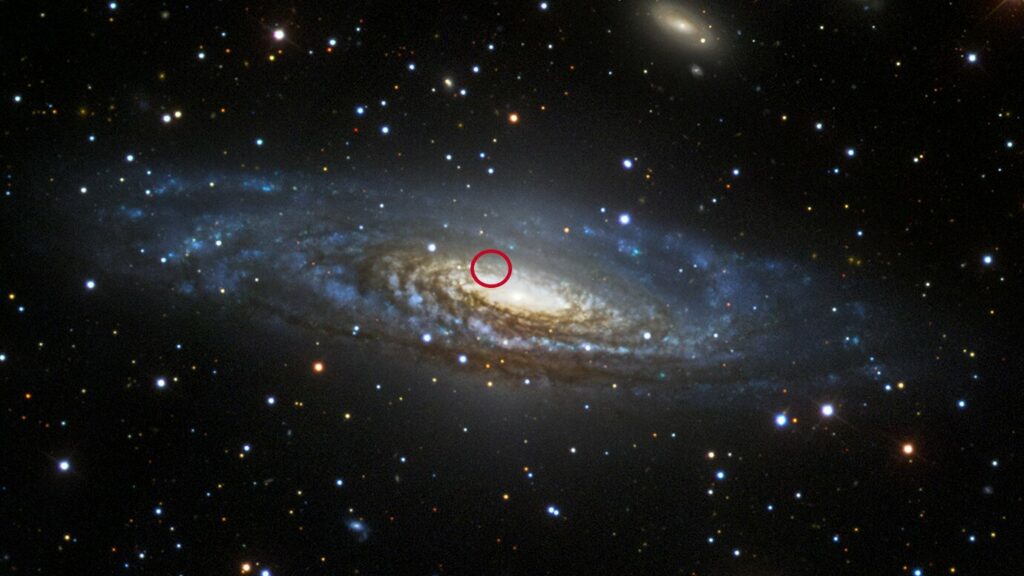
Lately, I’ve been seeing a new rash of photos showing how folks have aged as the hashtag #firstheadshot gains steam. These images give a chance to see just how brightly folks shone when they were young. They help train machine learning algorithms to better identify people – you knew you were donating training data, didn’t you? – and these images give us a chance to better understand how aging in different environments can really have an impact.
In the latest issue of The Astrophysical Journal, the supernova remnant 2014 C gets in on the game, and in a new paper led by Benjamin Thomas, researchers show us how this one grand system has changed over the years.
Back in 2014, a bright splot was spotted near the central region of the galaxy NGC 7331. Over the first 500 days after the initial explosion, the system was watched in every wavelength of light. This wasn’t just a regular massive star going boom one day; this was a massive star in a binary system that had its outer layers of hydrogen torn away by its companion until one day its core was out of fuel and its outer layers were a glimmer of their past glory. On that day, the star exploded.
The explosion was initially classified as a type Ia supernova – the type of supernova that occurs when a white dwarf star sucks too much material off a companion and gets so massive that it is unstable. This misidentification had the who-stole-mass-from-whom completely backward, and it was only 127 days after the explosion that the chemistry of the blast revealed its weird, true origin.
Astronomers are bomb investigators. We just work with really big thermonuclear bombs.
Over time, things only got weirder. The system emitted more X-rays, while the optical light stayed constant. Over more time and with more telescopes, it was found that X-ray light and the cooler light of infrared and radio emission all increased and then decreased. This bizarre phenomenon isn’t natural to a supernova but can be created as its light and energy blast surrounding material and echoes in interesting ways.
In this paper, the research team proposes that the star system had shed material earlier in its evolution and left behind a ring of material, like my shedding dogs might leave behind a ring of fur. As the explosion expanded, the shockwave hit this material, and the energy produced the glow we see in optical light while the radio emission came from parts of the shockwave that avoided the inner ring of material and interacted with material farther out.
What’s particularly cool is that they were able to map out the velocities of gases around the system at different temperatures, mapping out loosely where the slowdowns and clear traffic can be found. The paper is a really good read, and if you are a chemistry junky that can dig into doppler shifted gases, go give it a read. We have it linked on our website, DailySpace.org.
For the rest of you, it’s enough to know that if you want to escape a supernova quickly, it is best to steer as far away from a surrounding ring of material as possible, and there are going to be a whole lot of folks watching that heated pile-up at the ring even seven years later.
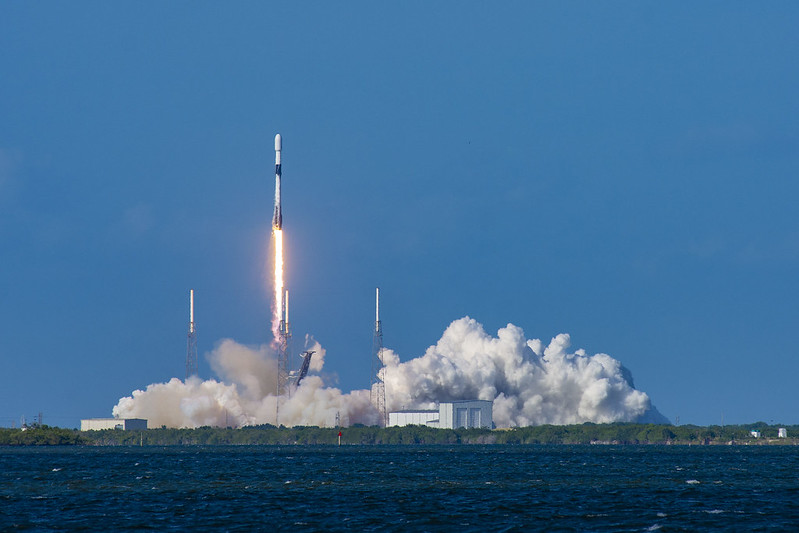
There have been a number of rocket launches since our last show, including three on April 29, and Starlink and Chinese launches on the weekend of the 30th. Starlink launches are fairly routine but there was a milestone of sorts set with this one: SpaceX broke their own record for Falcon 9 booster turnaround time: 21 days after its previous flight on the Ax-1 crewed mission on April 8.
We haven’t talked a lot about Russian launches lately, but it is worth noting that over the weekend of April 30, Russia conducted the first orbital launch of an Angara 1.2 rocket. It has been in development since 1992. Unlike the Angara A5, the Angara 1.2 has no boosters. It launched a military payload that has been designated Kosmos 2555, the details of which were, of course, not disclosed.
Another unique launch that took place over the weekend was the third launch of a Long March 11 from an ocean barge. On April 30, it delivered five spacecraft in the Jilin-1 series of high-resolution optical satellites to orbit. Overall, the Long March 11 has launched thirteen times, including three ocean launches.
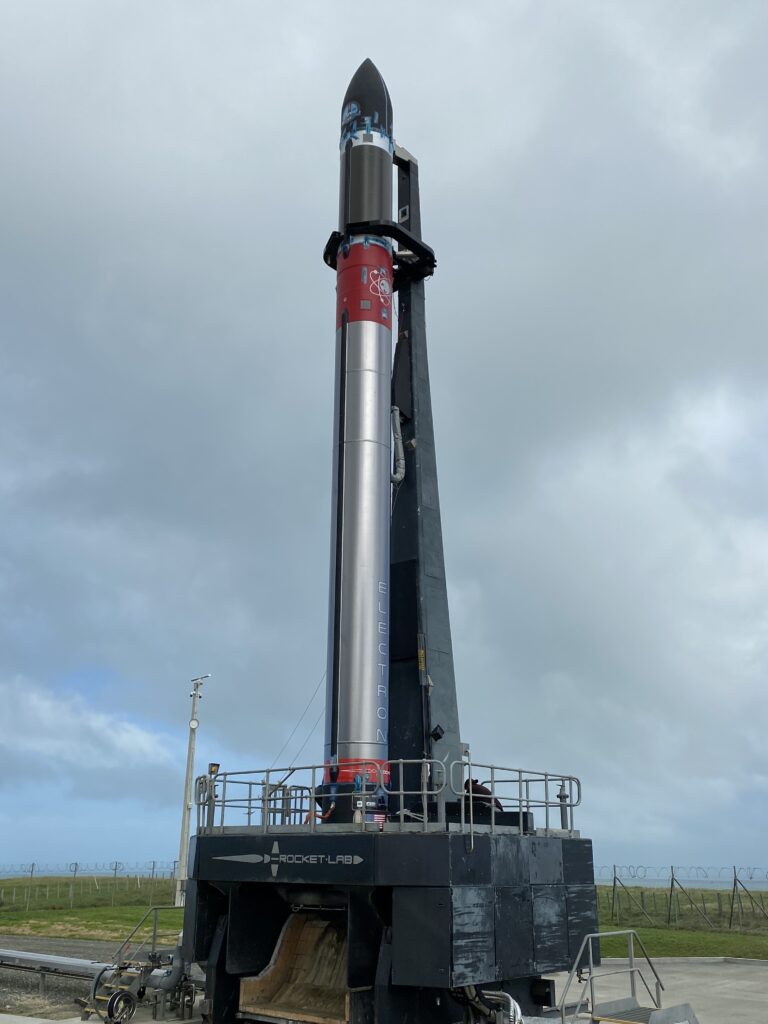
Finally, Rocket Lab launched another Electron rocket, this one called There And Back Again. The name was not only a reference to the Lord of the Rings, which was filmed in New Zealand where the rocket launched from, but also that this mission would be the first attempt at a mid-air recovery of the rocket’s first stage. The whole CosmoQuest team was excited about this launch, so we hosted a launch watch party on Twitch.
Rocket Lab had previously tested the reentry and mid-air catch separately; this was the first attempt to do both during an operational mission. Three previous missions made it through reentry to the water intact, and the boosters were recovered by one of their ships.
An hour before the launch of There and Back Again, the helicopter took off. About 150 seconds after launch, the stages separated and the first stage re-entered the atmosphere. At thirteen kilometers altitude, a drogue chute stabilized the stage for the main chute deployment at seven kilometers altitude.
Unfortunately, the catch was not completely successful. The helicopter was able to catch the first stage, but the pilot saw something he didn’t like with how it acted and released the load before it could be placed on the recovery ship. It splashed down in the ocean and was recovered by the ship, so it wasn’t a complete failure. Better luck next time, Rocket Lab!
There and Back Again was the 26th launch of an Electron rocket, and it successfully delivered 34 satellites into orbit for a variety of customers including Astrix, a New Zealand-based company that makes solar panels for small satellites, and Spaceflight, which organizes rideshares for many customers.

You may recall that there is a citizen science program involved with NASA’s Juno spacecraft and run by Planetary Science Institute senior scientist Candy Hansen. For this program, everyone is invited to download the raw images taken with the JunoCam imager onboard the spacecraft and process them to their hearts’ delight. We’ve seen true color renders, highly stylized variations, and everything in between.
Now, with Juno making flybys of some of Jupiter’s moons, we’re even getting to see shadows on the surface of Jupiter. In an image processed from Juno’s fortieth flyby, citizen scientist Thomas Thomopoulos created an enhanced-color image of the gas giant with the shadow of Ganymede seen on the cloud tops. You can see the full image in our show notes at DailySpace.org, where we will also have a link to the image processing website.
Go forth and make science art!
Another moon getting a lot of press these days is Saturn’s moon, Titan. Scientists are constantly comparing Titan to Earth, what with the liquid features, atmosphere, and weather. But not everything is similar. Those liquid features are made of methane. The atmosphere is far thicker than Earth’s. And the local winds build dunes made of hydrocarbon sand.

Now, new research published in Geophysical Research Letters and led by Mathieu Lapôtre models just how grains of sediment could form and exist on the large moon. On Earth, our sediment consists primarily of silicate rocks and minerals, which erode down into grains over very long periods of time. Silica is pretty hardy, after all, and doesn’t break down easily, so it takes erosion by wind and water to produce sand.
However, hydrocarbons are organic compounds, and they are more fragile than silicate grains, which means they should become dust over time. Lapôtre explains: As winds transport grains, the grains collide with each other and with the surface. These collisions tend to decrease grain size through time. What we were missing was the growth mechanism that could counterbalance that and enable sand grains to maintain a stable size through time.
To reconcile this mystery, the team turned to ooids on Earth, which are found in shallow tropical seas. Ooids are small, spherical grains made when calcium carbonate is removed from the water column and attaches to a silica grain, like quartz. The carbonate builds up in layers, growing in size, but that size is then kept in check by the erosion caused by waves and storms. This process leads to grains that stay consistent in size.
And that process could solve the mystery of Titan’s sand dunes lasting despite the more fragile grains. Lapôtre again explains: We were able to resolve the paradox of why there could have been sand dunes on Titan for so long even though the materials are very weak. We hypothesized that sintering – which involves neighboring grains fusing together into one piece – could counterbalance abrasion when winds transport the grains.
Further comparisons to existing data about Titan’s climate and sediment transport mechanisms match what could be happening to where it is happening on the moon. There are dunes at the equator, plains in the mid-latitudes, and labyrinthine terrain near the poles. Titan’s seasons drive the sedimentary cycle, just as happens on Earth and long ago on Mars.
As Lapôtre notes: It’s pretty fascinating to think about how there’s this alternative world so far out there, where things are so different, yet so similar.
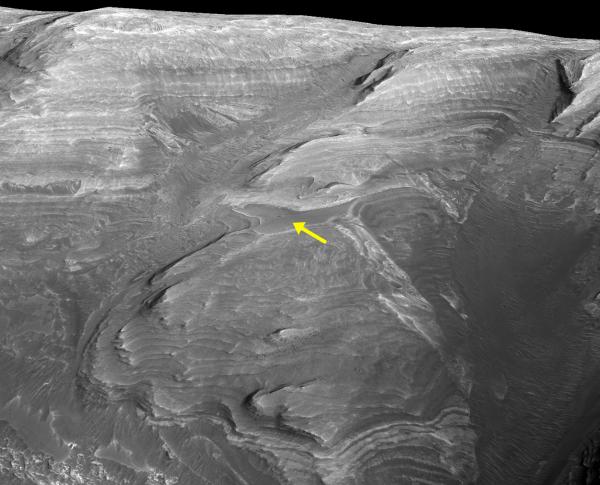
Speaking of Mars, a press release was issued from the Planetary Science Institute that looks at an intriguing darker layer of rocks on Mars at Mount Sharp, near where Curiosity is roving. This layer is “darker, stronger, flatter” than the surrounding sulfate-bearing rocks and has been observed using orbital data from the HiRISE camera onboard the Mars Reconnaissance Orbiter. The layer is also weathering differently than the layers above and below, suggesting is made of a more erosion-resistant rock.
Because of the stand-out nature of this rock layer, geologists refer to it as a “marker horizon”. We use marker horizons on Earth to constrain time-stratigraphic features where we know that the layer formed during one single event or a specific period of time. That layer then marks the rocks below as deposited before the event and therefore [older], and the rocks above as deposited after the event and [younger]. Think of the KT boundary and the iridium that marks “below here are dinosaurs and above here, not so much.”
On Mars, that means something interesting happened to cause a break in the sedimentary deposits. Lead author Catherin Weitz explains: Some event occurred within Gale crater during the deposition of sulfate-bearing sediments that resulted in a different kind of rock unit. The marker horizon is distinct in appearance from the sulfate-bearing rocks above and below it, indicating an environmental change occurred for a brief time, such as a drier period, or perhaps a regional event like an explosive eruption from a nearby volcano that deposited ash across a large area which included Gale crater.
It could even be the same rocks as above and below but the marker horizon became harder and more resistant to erosion for some reason. As Weitz notes: All of these potential origins require the presence of at least some water to cause cementation that hardened the horizon. Our orbital observations currently favor [a hardened] sulfate or volcanic ash origin, but we will have to wait until the Curiosity rover reaches the horizon in the coming months before determining which origin is most plausible.
And that gives us something to look forward to. We’ll bring future results of Curiosity’s exploration right here on Daily Space.
This work was published in the Journal of Geophysical Research: Planets.
Before jumping to This Week in Rocket History, I just wanted to take a quick look at some new results about our Sun.

In a new paper in Nature Communications Physics, researchers led by Yi-Hsin Liu look at how the roiling coils of plasma in the outer layers of the Sun can reconnect and release energy. Working for first principles – like when a math or science teacher asks you to prove a theory from base equations – they worked out how energy flows out of a system when the north and south parts of a field come together.
The basic physics behind what they studied is used in all kinds of different sensors, including the ones that tell your iPad or AirPod Max headphones to turn off when they’re in their case. The details, however, are a lot harder to work out when the magnets involved are the ions and electrons moving in the Sun’s plasma.
But solving hard things is why a lot of folks go into physics, and this team has a solid model that makes solid predictions, and conveniently our Sun is moving into a much more active period and should be providing all the flares this team needs to confirm and refine their work.
So next time you flip closed a flip phone, know you are relying on the same physics seen in the Sun.
Now, let’s welcome back Erik as we talk about this week in rocket history.
This Week in Rocket History
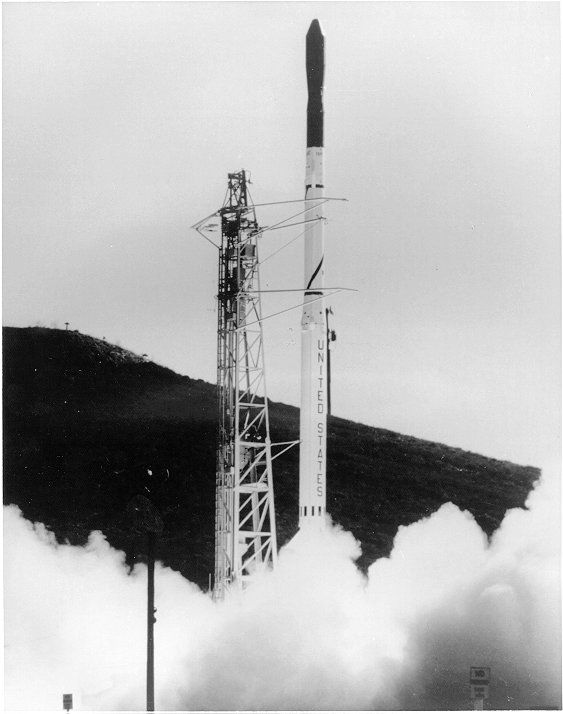
We’ve been hyping up this installment of This Week in Rocket History all episode. So what is it? Another foreign satellite launched on a U.S. Scout rocket, the U.K.’s Ariel 3.
Ariel was a British satellite program that made the United Kingdom the third country to operate a satellite. Ariel 1 was launched in 1962, 2 in 1964, and 3 in 1967. Ariel 1 and 2 had British-built experiments on an American satellite bus.
Development of Ariel 3 started in 1962 with a formal proposal of the instruments to NASA from British scientists. A year later, in 1963, all of the instruments were agreed to by the two teams, but for a variety of reasons, the satellite construction did not start until 1964.
Ariel 3 was the first satellite built in the U.K., and the British team was responsible for building a prototype, engineering models, and two flight satellites. The satellite’s orbit was changed from an originally-planned 50-degree inclination to 80 degrees, to give a molecular oxygen experiment access to other latitudes to collect data, important because the solar cycle was picking up at the time.
Ariel 3 had four solar panels and five experiments and weighed just under 90 kilograms. The main purpose of the satellite was to observe variable stars and galactic radio sources. Unlike the San Marco satellites we talked about last week, Ariel 3 was launched on a Scout A rocket from Vandenberg Air Force Base on May 5, 1967. It was originally planned to be launched from Wallops like San Marco 1 but was moved to Vandenberg because of the new orbit.
The satellite body had three paddles – which Gordon on our editorial team thought looked more like snowshoes – where solar panels and some of the instruments were mounted.
The terrestrial radio noise experiment was designed to quantify the radio noise at the satellite altitude by allowing scientists to more easily tell what was a terrestrial radio source and what was a galactic radio source. The experiment demonstrated that most of the noise came at frequencies just above the “ionospheric critical frequency”, where terrestrial transmissions at lower frequencies are blocked and reflected back toward Earth by the ionosphere. Additionally, the noise from higher frequencies was so spread out that it was easy to filter.
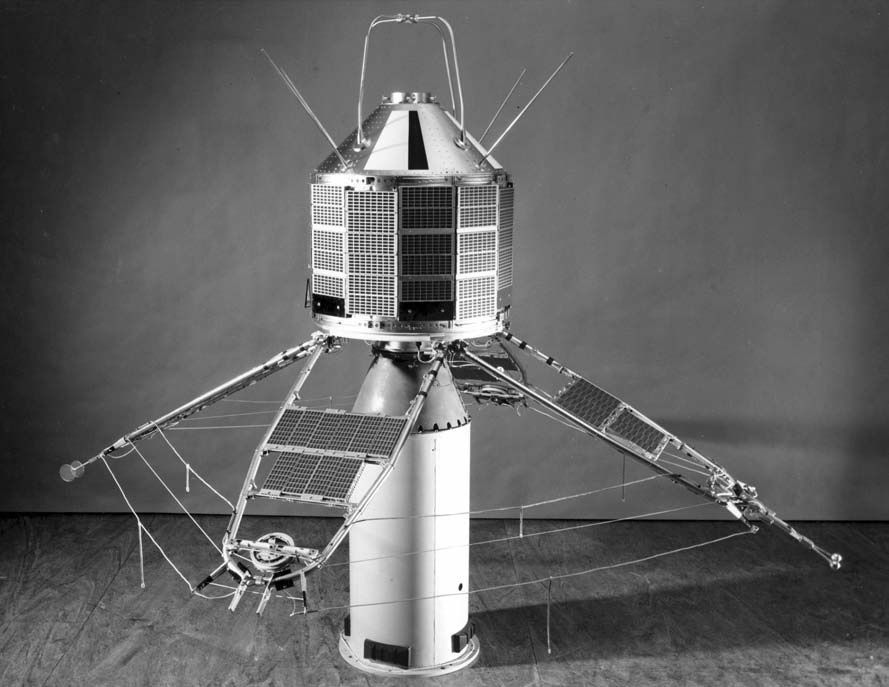
It also measured the density and temperature of electrons with a Langmuir probe and radiofrequency capacitance counter. The Langmuir probe measured the temperature of electrons by comparing the voltages of two different spheres on the spacecraft. The voltages were constantly changed in reaction to electron temperature to maintain a fixed ratio between the two spheres. The electron temperature was determined by comparing how the voltages actually changed compared to the fixed ratio.
The radiofrequency capacitance probe measured electron density by counting the change in current between two grids. Like the Langmuir probe, it operated by switching voltages rapidly. To properly measure the change in current, it needed to be at “space potential” – or the same arrangement of positively or negatively charged environment of space – for at least part of the sweep. This was enabled by changing voltages. The two experiments actually used the same probes, with the experiments switching every 5.2 seconds.
The last major experiment on Ariel 3 counted molecular oxygen, a hazard in low Earth orbit, which can damage spacecraft. It does this by chemically interacting with almost everything, breaking down materials exposed to UV radiation. Indeed, the experiment itself was damaged by this, and after twenty days the sensors were ruined. Fortunately, ground experiments predicted this would happen, so nothing was lost. All of the other experiments continued functioning through the end of the mission, exceeding their one-year design lifetime.
Ariel 3 operated nominally until its tape recorder failed in early 1968. In late 1968 its battery failed, meaning it could only be used when the satellite was directly lit by the Sun. In early 1969, it could only downlink to one ground station, and it was finally turned off in mid-1969. Ariel 3 re-entered the Earth’s atmosphere in 1970 when its orbit decayed.
Statistics
And now, for some statistics.
The number of toilets in space is eight: four on the ISS, one on Soyuz MS-21, one on Crew Dragon Endurance, one on the Crew Dragon Freedom, and one on Tianhe.
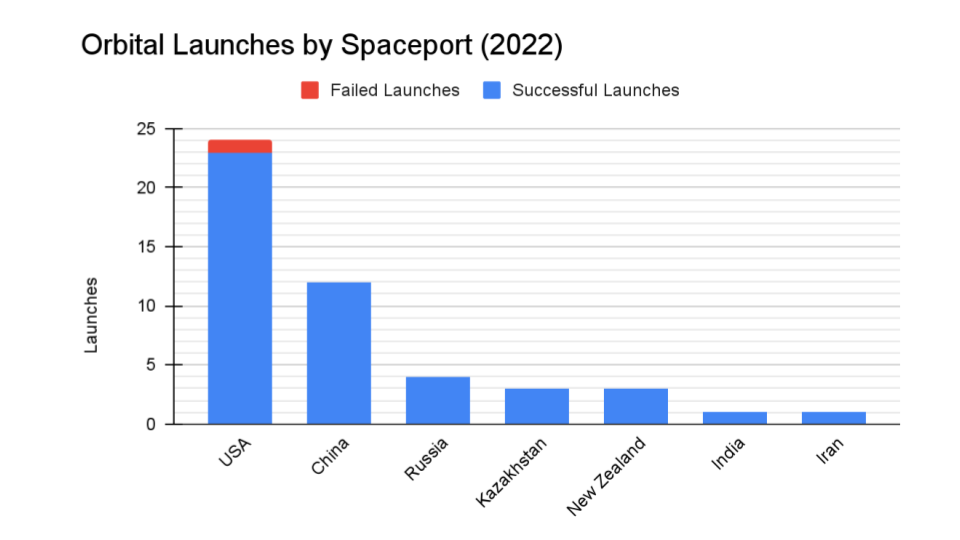
We keep track of orbital launches by launch site, also called spaceport. Here’s that breakdown:
USA 24
China 12
Russia 4
Kazakhstan 3
New Zealand 3
India 1
Iran 1
From those 48 launches, a total of 792 spacecraft were put into orbit.
Your random space fact for this week is that a stand of trees at Birr Castle in Ireland is in the shape of a spiral galaxy. To commemorate the 150th anniversary of the discovery of the spiral structure of the Whirlpool Galaxy (Messier 51) by the 3rd Earl of Rosse, the lime trees were planted to match the shape of a sketch he made. He used the 1.8-meter reflecting telescope, The Leviathan of Parsonstown, to make the discovery in 1845.
This has been the Daily Space.
You can find more information on all our stories, including images, at DailySpace.org. As always, we’re here thanks to the donations of people like you. If you like our content, please consider joining our Patreon at Patreon.com/CosmoQuestX.
Credits
Written by Pamela Gay, Beth Johnson, Erik Madaus, and Gordon Dewis
Hosted by Pamela Gay, Beth Johnson, and Erik Madaus
Audio and Video Editing by Ally Pelphrey
Content Editing by Beth Johnson
Intro and Outro music by Kevin MacLeod, https://incompetech.com/music/


 We record most shows live, on Twitch. Follow us today to get alerts when we go live.
We record most shows live, on Twitch. Follow us today to get alerts when we go live.